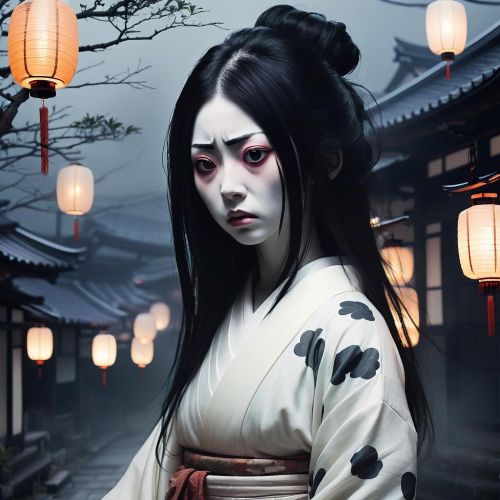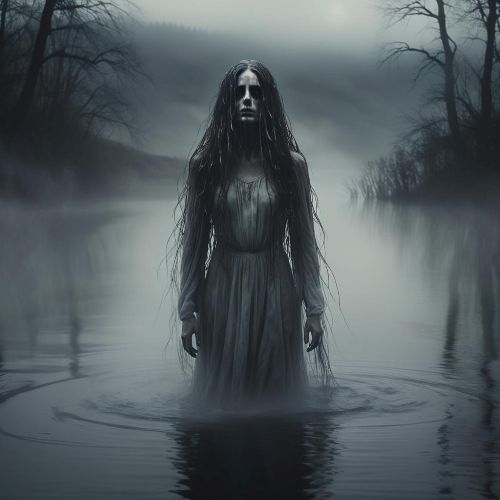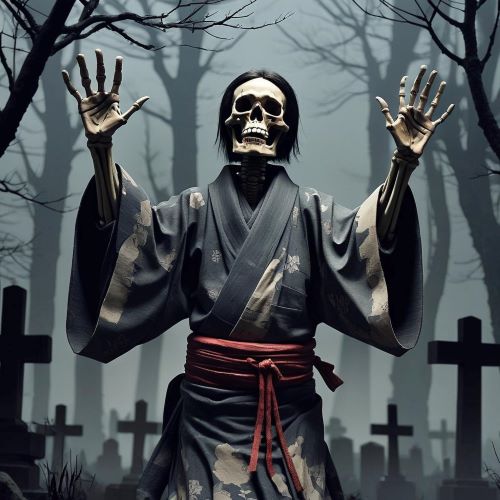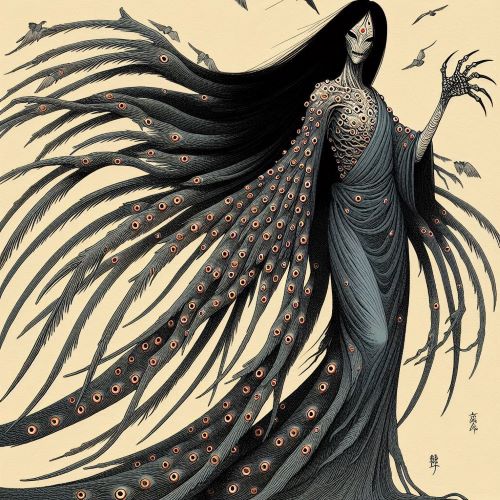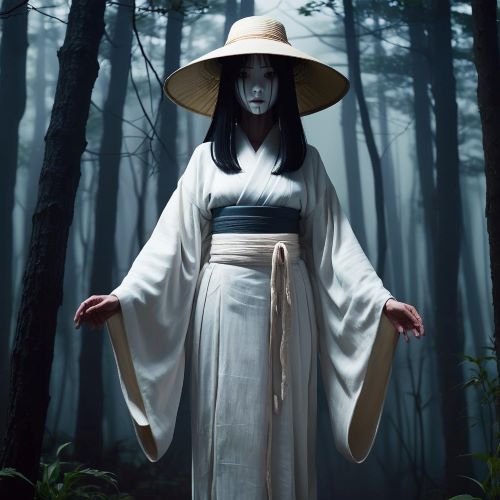East Asian Ghosts
East Asian Ghosts hold a central place in the mythology and folklore of countries such as China, Japan, Korea, and Vietnam. These spectral beings reflect cultural ideas about the afterlife, morality, and the balance between the living and the dead. Stories of wandering souls, vengeful spirits, and ancestral protectors have been passed down for centuries, shaping the spiritual traditions of East Asia. Unlike Western depictions of ghosts as purely frightening, East Asian Ghosts often embody complex roles, serving as warnings, guides, or reminders of the importance of respect for the departed.
In Chinese mythology, spirits of the restless dead, often referred to during the Ghost Festival, are believed to return to the world of the living. Families perform rituals, make offerings, and burn incense to appease these spirits, ensuring harmony between both realms. Tales of the hungry ghosts, driven by insatiable desires, emphasize the consequences of greed and improper conduct in life. Japanese traditions offer equally haunting figures, with yūrei becoming some of the most iconic East Asian Ghosts. These spirits, often portrayed with long hair and white garments, are associated with unfinished business or emotional turmoil that ties them to the world of the living.
Korean folklore also preserves a rich legacy of ghostly encounters, where restless spirits called gwishin appear in abandoned places or linger near the sites of tragic events. They highlight the moral weight of injustice, betrayal, or unfulfilled duties. Meanwhile, Vietnamese traditions tell of wandering souls that require ceremonies to guide them to rest, especially during Vu Lan, a festival honoring ancestors and helping lost spirits find peace. These narratives reinforce the belief that proper rituals, remembrance, and compassion are vital for maintaining balance between life and death.
The presence of East Asian Ghosts in mythology is not limited to terrifying tales. Many stories depict them as guardians, protectors, or messengers, guiding individuals toward wisdom or cautioning them against danger. Their influence is seen in literature, theater, and art across centuries, with classic ghost stories becoming cultural treasures. Plays like Japan’s Noh and Kabuki often bring these spirits to life on stage, blending drama with spirituality. Similarly, Chinese operas and folk tales have long used ghostly figures to reflect themes of justice, morality, and human emotion.
Today, East Asian Ghosts continue to inspire modern culture, appearing in films, television, video games, and literature worldwide. From chilling horror movies to symbolic stories of ancestral reverence, these spirits transcend their mythological roots to remain deeply relevant. They embody cultural values about life, death, and memory, reminding people of the importance of family bonds and respect for the unseen. By exploring the tales of East Asian Ghosts, one gains not only an appreciation of their haunting beauty but also a deeper understanding of the philosophies that have shaped East Asian traditions for centuries.
East Asian Ghosts hold a central place in the mythology and folklore of countries such as China, Japan, Korea, and Vietnam. These spectral beings reflect cultural ideas about the afterlife, morality, and the balance between the living and the dead. Stories of wandering souls, vengeful spirits, and ancestral protectors have been passed down for centuries, shaping the spiritual traditions of East Asia. Unlike Western depictions of ghosts as purely frightening, East Asian Ghosts often embody complex roles, serving as warnings, guides, or reminders of the importance of respect for the departed.
In Chinese mythology, spirits of the restless dead, often referred to during the Ghost Festival, are believed to return to the world of the living. Families perform rituals, make offerings, and burn incense to appease these spirits, ensuring harmony between both realms. Tales of the hungry ghosts, driven by insatiable desires, emphasize the consequences of greed and improper conduct in life. Japanese traditions offer equally haunting figures, with yūrei becoming some of the most iconic East Asian Ghosts. These spirits, often portrayed with long hair and white garments, are associated with unfinished business or emotional turmoil that ties them to the world of the living.
Korean folklore also preserves a rich legacy of ghostly encounters, where restless spirits called gwishin appear in abandoned places or linger near the sites of tragic events. They highlight the moral weight of injustice, betrayal, or unfulfilled duties. Meanwhile, Vietnamese traditions tell of wandering souls that require ceremonies to guide them to rest, especially during Vu Lan, a festival honoring ancestors and helping lost spirits find peace. These narratives reinforce the belief that proper rituals, remembrance, and compassion are vital for maintaining balance between life and death.
The presence of East Asian Ghosts in mythology is not limited to terrifying tales. Many stories depict them as guardians, protectors, or messengers, guiding individuals toward wisdom or cautioning them against danger. Their influence is seen in literature, theater, and art across centuries, with classic ghost stories becoming cultural treasures. Plays like Japan’s Noh and Kabuki often bring these spirits to life on stage, blending drama with spirituality. Similarly, Chinese operas and folk tales have long used ghostly figures to reflect themes of justice, morality, and human emotion.
Today, East Asian Ghosts continue to inspire modern culture, appearing in films, television, video games, and literature worldwide. From chilling horror movies to symbolic stories of ancestral reverence, these spirits transcend their mythological roots to remain deeply relevant. They embody cultural values about life, death, and memory, reminding people of the importance of family bonds and respect for the unseen. By exploring the tales of East Asian Ghosts, one gains not only an appreciation of their haunting beauty but also a deeper understanding of the philosophies that have shaped East Asian traditions for centuries.



